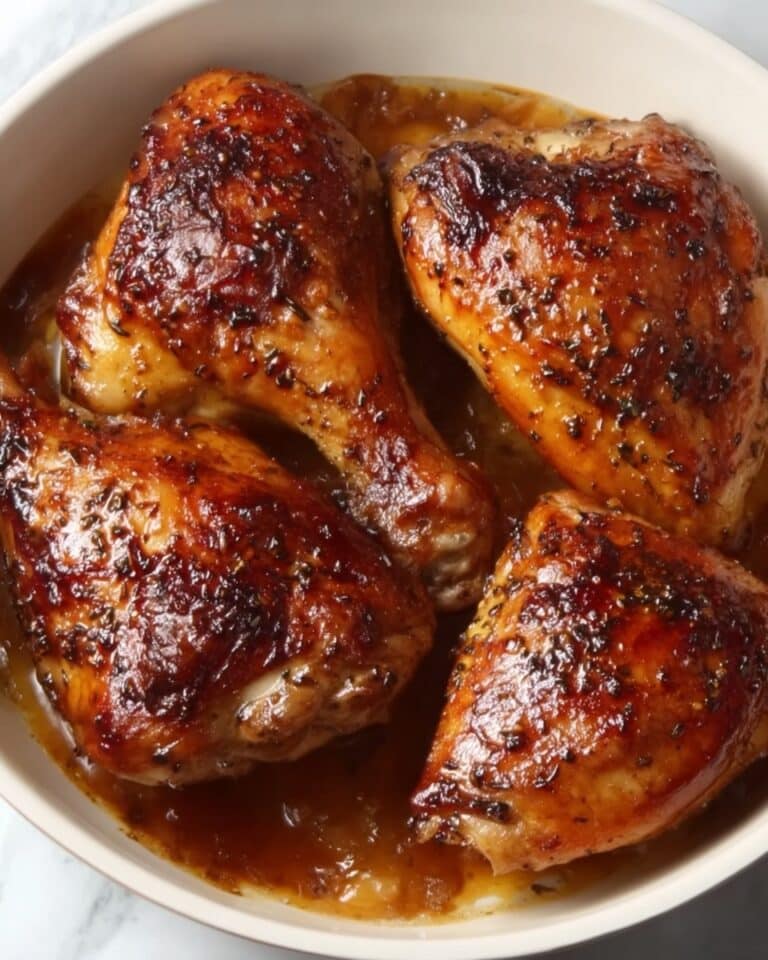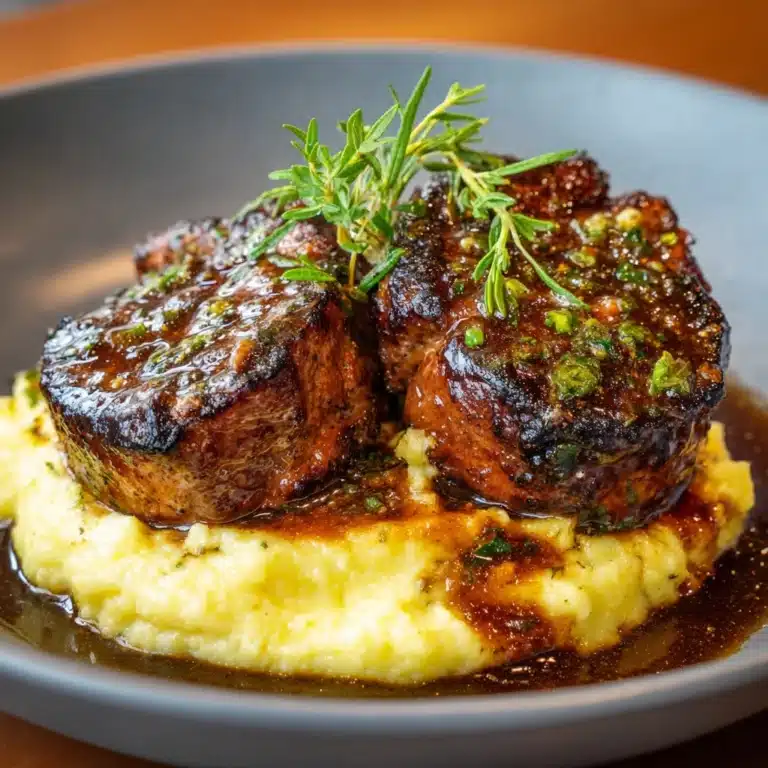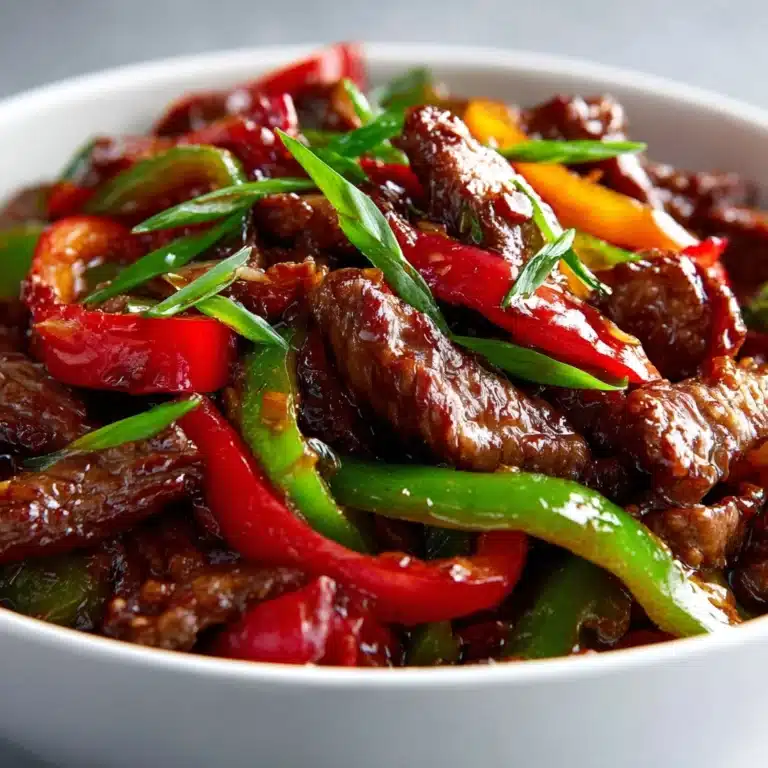German Goulash Recipe
Get cozy and prepare to fill your kitchen with irresistible aromas—German Goulash is the kind of heartwarming dish that makes you want to gather everyone around the table. This classic stew boasts tender beef, velvety onions, and a rich, paprika-laced sauce that’s been perfected through generations. With just a handful of humble ingredients, you can create a robust meal that tastes even better the next day. Whether you’re serving it on a chilly evening or simply craving some soul-soothing comfort food, German Goulash is guaranteed to become a frequent request in your home.
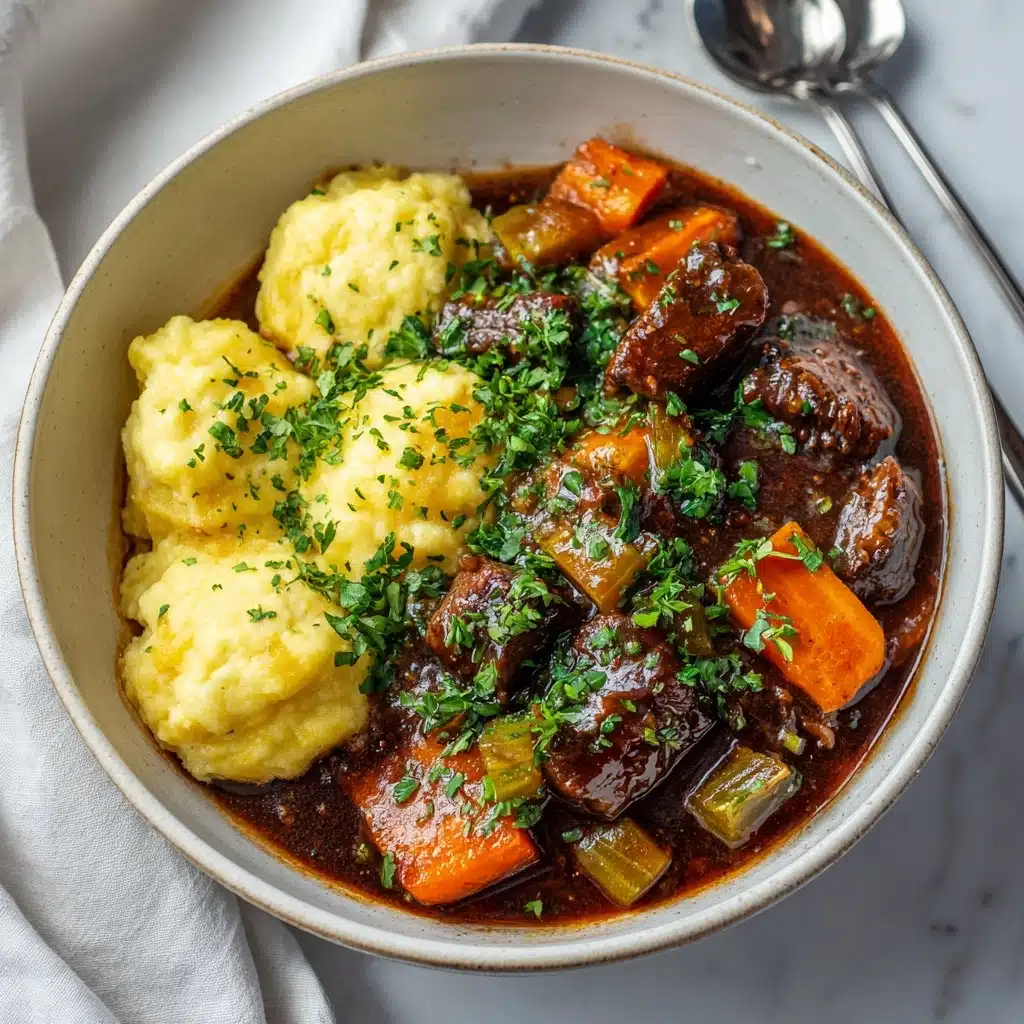
Ingredients You’ll Need
What I love most about this dish is how straightforward the ingredients list is, yet how each one plays a crucial role—from the beef that melts in your mouth, to the sweet pop of paprika and the deep flavor the wine brings. Gather these pantry staples and you’ll be on your way to an unforgettable German Goulash.
- Vegetable oil: Perfect for searing the beef and locking in flavor right from the start.
- Beef chuck (2 lbs, cut into 1-inch cubes): This cut gets meltingly tender, making each bite unforgettable.
- Onions (2 medium, finely chopped): Essential for sweetness and body in the sauce; don’t skimp!
- Garlic (3 cloves, minced): Adds a subtle depth and just the right amount of savoriness.
- Tomato paste (2 tablespoons): Brings rich color and a boost of umami goodness.
- Sweet paprika (1 tablespoon): The soul of goulash—look for fresh, vibrant paprika for the best flavor.
- Smoked paprika (1 teaspoon): Infuses the stew with a lovely, subtle smokiness.
- Caraway seeds (1 teaspoon, optional): A traditional touch that adds earthiness and character, if you like.
- Salt (1/2 teaspoon): Essential for seasoning every layer.
- Black pepper (1/2 teaspoon): For an aromatic, gentle heat.
- Beef broth (3 cups): Builds the flavorful base for your sauce—choose good quality for best results.
- Dry red wine (1 cup): Deepens the sauce and ties all the flavors together.
- Red wine vinegar (1 tablespoon): Brightens and sharpens the stew, balancing all those rich notes.
- Bay leaves (2): They gently perfume the goulash as it simmers away.
- Dried marjoram (1 teaspoon): Brings a subtle herbal note that pairs beautifully with the beef.
- Flour (1 tablespoon, optional): Use if you want an extra-thick, luscious sauce.
- Chopped fresh parsley (for garnish): A pop of color and freshness to finish the dish.
How to Make German Goulash
Step 1: Sear the Beef
Grab your largest Dutch oven or sturdy pot and heat up the vegetable oil over medium-high. Working in batches, add the beef cubes and let them develop a deep, golden-brown crust without crowding the pan—this step is all about building foundational flavor. When nicely seared, transfer all the beef to a plate and get ready for the next step.
Step 2: Sauté the Onions
Without cleaning the pot (those browned bits are flavor gold!), reduce the heat to medium and toss in the finely chopped onions. Stir them occasionally and let them cook for 8 to 10 minutes, until soft, golden, and just starting to caramelize. The onions form the silky backbone of this German Goulash.
Step 3: Add Garlic, Tomato Paste, and Spices
Stir the minced garlic into the onions, followed closely by the tomato paste, both types of paprika, and caraway seeds if you’re using them. Let the mixture cook for one to two minutes, stirring constantly, until the spices are fragrant and the tomato paste deepens in color—this is when the flavors really come alive!
Step 4: Build the Broth
Now, return the browned beef to the pot. Sprinkle in the salt and black pepper. Pour over the beef broth and red wine, then stir in the red wine vinegar, bay leaves, and dried marjoram. You’ll start to notice the irresistible aroma of classic German Goulash at this point.
Step 5: Simmer and Tenderize
Bring everything to a gentle simmer, then cover and dial the heat down to low. Let the stew bubble away softly for 2 to 2½ hours, stirring occasionally. You’ll know it’s done when the beef is buttery-tender and the sauce has thickened slightly.
Step 6: Thicken and Finish
If you want a richer, more velvety texture, mix the flour with a tablespoon of cold water, then stir it into the goulash during the last 15 minutes of cooking. Once the sauce reaches your desired consistency, remove the bay leaves, give it a taste (and adjust seasoning, if needed), and get ready to serve!
How to Serve German Goulash
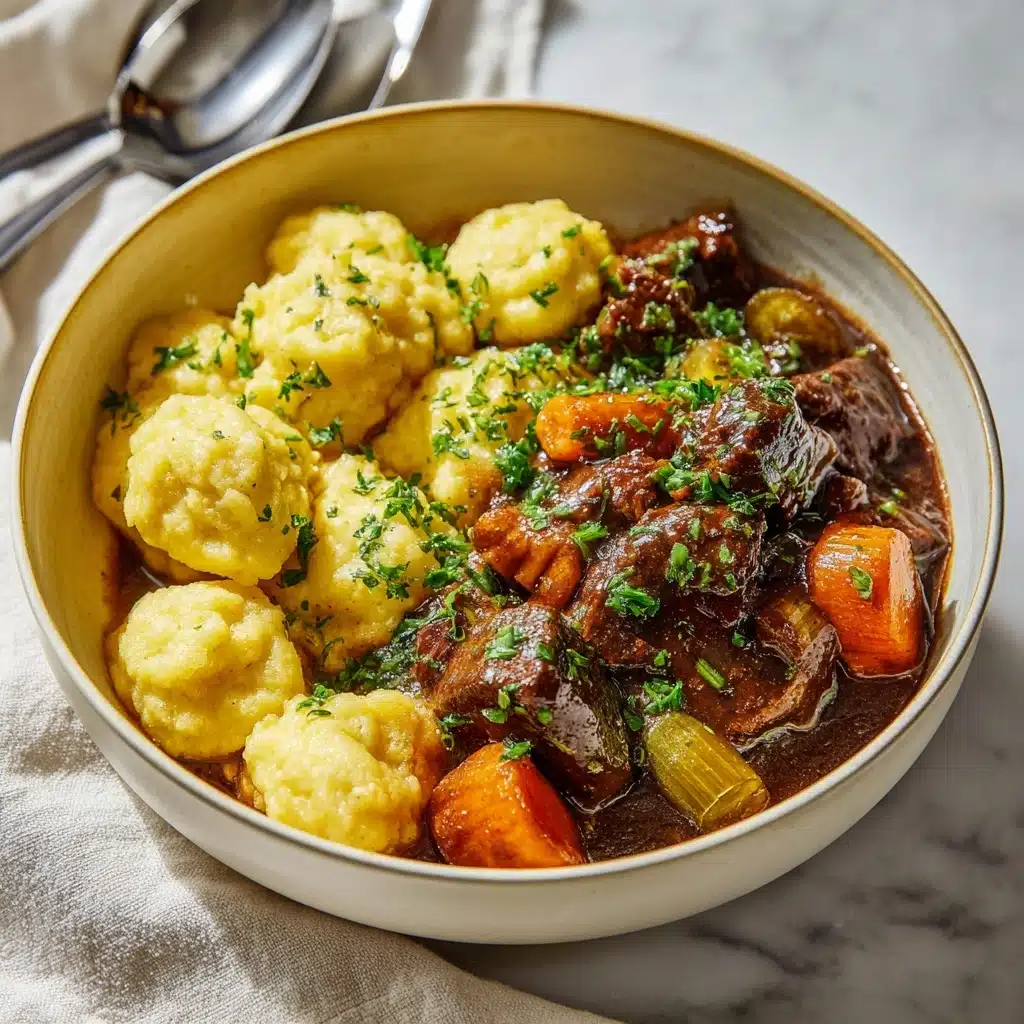
Garnishes
A sprinkle of freshly chopped parsley just before serving instantly brightens the bowl and adds a touch of freshness. You can also add a little dollop of sour cream for creaminess or even a dash of extra paprika for that classic look.
Side Dishes
German Goulash is fantastic paired with pillowy egg noodles, simple boiled potatoes, or thick slices of crusty country bread—perfect for soaking up every last spoonful of sauce. If you want a lighter touch, a crisp green salad works beautifully on the side.
Creative Ways to Present
Ladle your goulash into rustic bowls for a homespun feel, or try serving it in bread bowls for a fun, edible twist. If you’re looking to impress at a dinner party, serve smaller portions in elegant ramekins as an appetizer or as part of a hearty buffet.
Make Ahead and Storage
Storing Leftovers
Store any leftover German Goulash in an airtight container in the refrigerator for up to 3 days. The flavors actually deepen and mellow as it sits, making leftovers taste just as amazing—or dare I say, even better!
Freezing
German Goulash freezes like a dream. Once cooled, transfer to freezer-safe containers or zip-top bags, making sure to leave a little space for expansion. It will keep well for up to 3 months. Just thaw overnight in the fridge when you need a quick, cozy meal.
Reheating
Reheat your goulash gently on the stovetop over medium-low heat, adding a splash of broth or water to loosen the sauce if needed. Stir occasionally until warmed through, and finish with fresh parsley for that just-made touch.
FAQs
Can I make German Goulash with a different cut of beef?
Absolutely! While beef chuck is traditional for its tenderness and marbling, you can use brisket, stewing beef, or even pork in a pinch. Just make sure to adjust the cooking time so the meat becomes melt-in-your-mouth tender.
Does German Goulash have to be spicy?
Not at all! This version is rich and flavorful but not spicy-hot. If you like a touch of heat, add a pinch of cayenne or a little hot paprika at your own discretion.
What can I use instead of red wine?
If you prefer to skip the wine, you can substitute with more beef broth and a splash of balsamic vinegar for depth. The overall character will still be delicious and hearty.
Is it possible to make German Goulash gluten-free?
Yes! Simply skip the flour or use a gluten-free thickening agent. Serve with gluten-free sides like rice or potatoes for a comforting, allergy-friendly meal.
Can I make German Goulash in advance?
It’s actually even better when made ahead. The flavors meld and develop with an overnight rest in the fridge. Just gently reheat before serving for the ultimate comfort food experience.
Final Thoughts
If you’re ready for a taste of pure comfort, don’t wait to try this German Goulash. It’s cozy, deeply flavorful, and a true crowd-pleaser that never goes out of style. Gather your favorite people, ladle out a steaming bowl, and enjoy a meal that feels just like home.
Print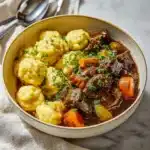
German Goulash Recipe
- Total Time: 2 hours 50 minutes
- Yield: 6 servings 1x
- Diet: Non-Vegetarian
Description
A hearty and comforting German Goulash recipe that features tender chunks of beef simmered in a rich and flavorful sauce, seasoned with a blend of paprika and other spices. Perfect for a satisfying meal on a chilly day.
Ingredients
For the Goulash:
- 2 tablespoons vegetable oil
- 2 pounds beef chuck, cut into 1-inch cubes
- 2 medium onions, finely chopped
- 3 cloves garlic, minced
- 2 tablespoons tomato paste
- 1 tablespoon sweet paprika
- 1 teaspoon smoked paprika
- 1 teaspoon caraway seeds (optional)
- 1/2 teaspoon salt
- 1/2 teaspoon black pepper
- 3 cups beef broth
- 1 cup dry red wine
- 1 tablespoon red wine vinegar
- 2 bay leaves
- 1 teaspoon dried marjoram
- 1 tablespoon flour (optional, for thickening)
- Chopped fresh parsley for garnish
Instructions
- Heat the oil: In a large Dutch oven or heavy pot, heat the oil over medium-high heat.
- Sear the beef: Working in batches, sear the beef until browned on all sides. Transfer to a plate.
- Cook the onions: Reduce heat to medium, add onions, and cook until soft and golden.
- Add spices: Stir in garlic, tomato paste, paprika, and caraway seeds. Cook to toast the spices.
- Combine ingredients: Return beef to the pot, season with salt and pepper. Pour in broth, wine, vinegar, bay leaves, and marjoram.
- Simmer: Bring to a simmer, cover, and simmer gently for 2 to 2½ hours until beef is tender.
- Thicken (optional): Stir in flour mixed with water during the last 15 minutes if desired.
- Finish and serve: Remove bay leaves, garnish with parsley, and serve hot.
Notes
- Serve with egg noodles, boiled potatoes, or crusty bread.
- For a richer flavor, make ahead and reheat before serving.
- You can substitute pork for beef if needed.
- Prep Time: 20 minutes
- Cook Time: 2 hours 30 minutes
- Category: Main Course
- Method: Stovetop
- Cuisine: German
Nutrition
- Serving Size: 1 bowl
- Calories: 410
- Sugar: 4g
- Sodium: 460mg
- Fat: 22g
- Saturated Fat: 8g
- Unsaturated Fat: 12g
- Trans Fat: 0g
- Carbohydrates: 10g
- Fiber: 2g
- Protein: 40g
- Cholesterol: 115mg
